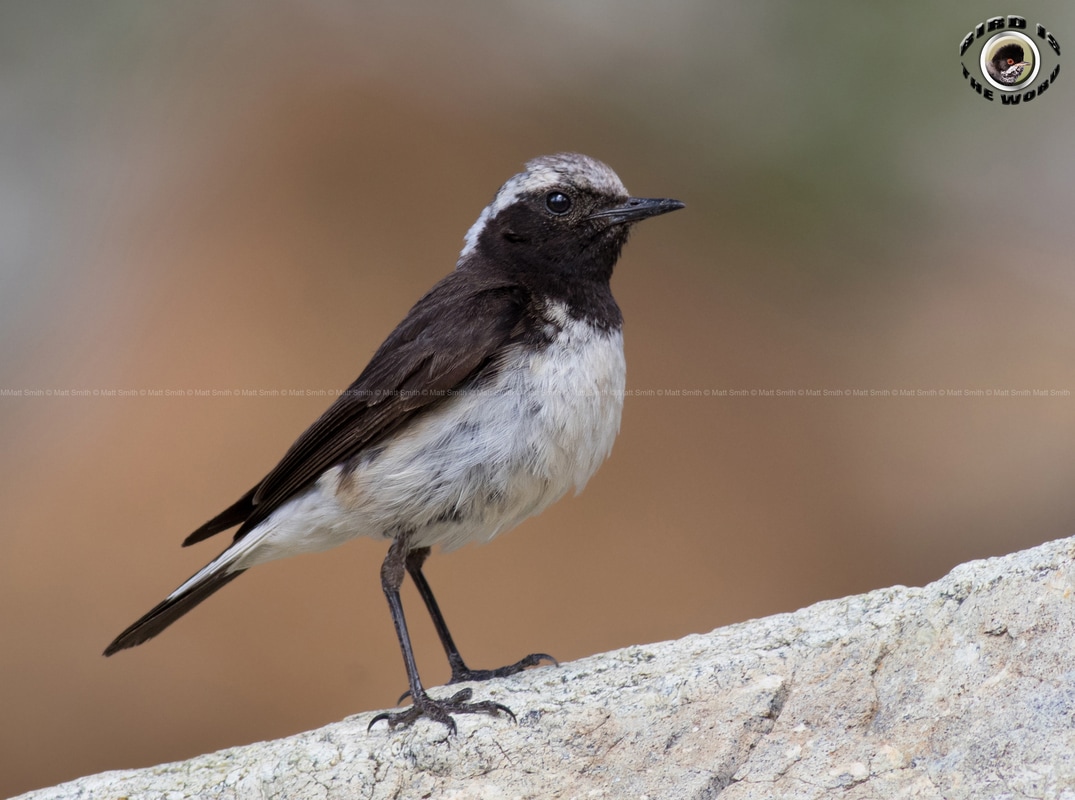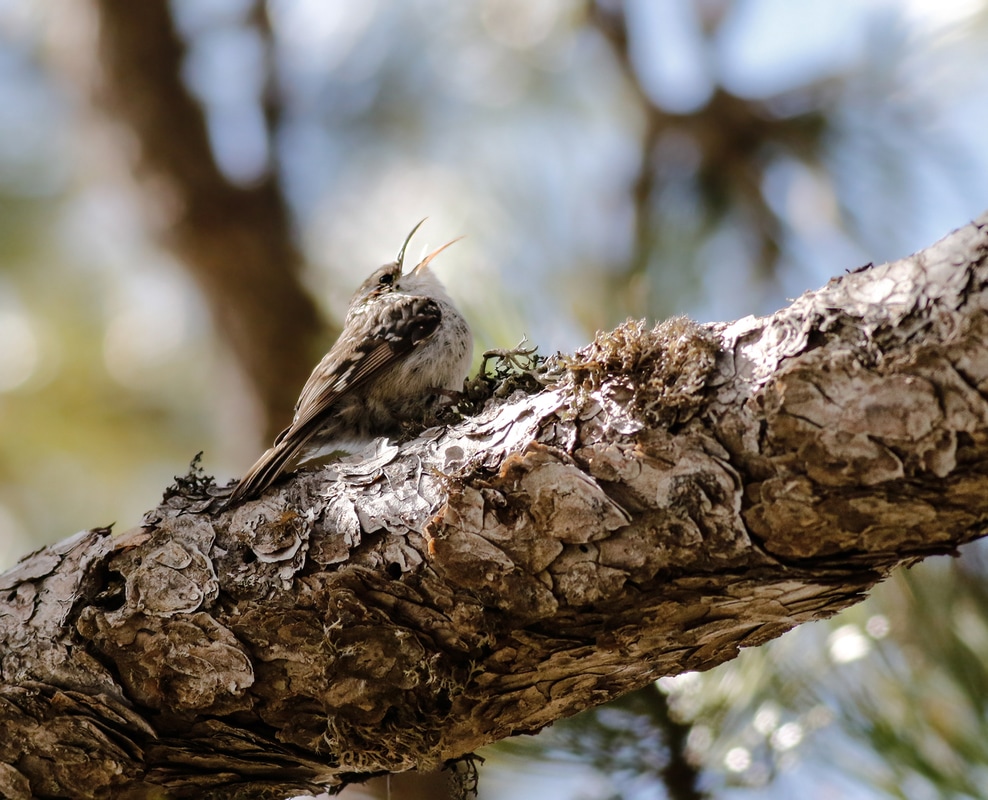Cyprus has 3 Breeding Endemic Species of Bird
*"Breeding Endemic" constitutes that these species breed/nest in no other country. By definition they are not true Endemics as they are migrating species (or partial migrants in the case of the Cyprus Warbler).
Cyprus Warbler (Sylvia melanothorax)
*"Breeding Endemic" constitutes that these species breed/nest in no other country. By definition they are not true Endemics as they are migrating species (or partial migrants in the case of the Cyprus Warbler).
Cyprus Warbler (Sylvia melanothorax)
|
A small migrant breeder that enjoys shrubland and hillside slopes. Most commonly seen in Cyprus Broom Shrubs and occasionally Pine Trees. They like to nest at the base of small hawthorn trees or other small trees and bushes that provide thorny protection and concealment. Very similar in appearance to its sister species the Sardinian Warbler (Sylvia melanocephala) though males are distinguishable by their speckled chests and bold moustache (similar in Rüppell's warbler (Sylvia rueppelli)), females distinguishable by their lightly speckled chests. Also the call of the Cyprus Warbler is more scratchy and hollow sounding but maybe only to those that hear both the Cyprus Warbler and Sardinian Warbler calling frequently.
Young Cyprus Warblers are very hard to identify with only the call, spotted under tail, yellow/pinkish bill, pale edges on the wing tertials, primary and secondaries and lack of red-eye ring to go by, although by Autumn some already start to develop speckles on the chest making identification a little bit easier. A Species best observed at Sunrise when they are at their most active. |
|
There is estimated to be about 70,000-140,000 breeding pairs in Cyprus each year. Though through personal observation over the past 5 years I estimate this species to be in considerable decline throughout its range likely due to Loss of habitat (house construction on broom slopes) and territories being over-run with Sardinian Warblers that only colonized the island over the past 2 decades.
The Cyprus Warblers winter in Egypt, Israel and Jordan. Sometimes if the surrounding countries are experiencing cold/harsh winters the Cyprus Warblers opt to stay in Cyprus during the winter.
The Cyprus Warblers winter in Egypt, Israel and Jordan. Sometimes if the surrounding countries are experiencing cold/harsh winters the Cyprus Warblers opt to stay in Cyprus during the winter.
Cyprus Wheatear (Oenanthe cypriaca)
|
A small migrant breeder that enjoys woodland and rocky terrain. This species unlike other wheatears enjoy areas of high elevation in the forests and mountainous regions and can often be seen in Pine, Juniper, Hawthorn and Cedar trees and nesting in rock crevices.
A species very similar in appearance to the Pied Wheatear (of which it was once considered as a sub-species of). This species is Black and White in appearance during breeding season and shows a slightly peach chest during non-breeding. There is estimated to be about 6,000-8,000 breeding pairs in Cyprus each year. The Cyprus Wheatears winter in Ethiopia and Sudan. During Autumn they have been observed hopping East in great numbers to Israel to start their migration. |
|
Cyprus Scops Owl - (otus cyprius)
The Scops owl is nearly identical in appearance to the Eurasian Scops Owl, though Cyprus Scops owls tend to be darker and also lack a rufous colour morph. The real notible difference though is in their calls (which can be heard in the video below). Previously listed as an Endemic Sub Species however an argument for a taxonomic reprisal for full species evaluation was put forward in 2015 and as of July 2016 the IOC officially changed O.s.Cyprius to Otus Cyprius.
Found pretty much throughout Cyprus, but more so in sparse woodland areas. This species is not hard to find at night and can be heard from great distances, however during the day they prove to be one of the hardest birds to find in Cyprus. They hide in trees during the day close to tree trunks, putting their supreme camouflage to work!
Found pretty much throughout Cyprus, but more so in sparse woodland areas. This species is not hard to find at night and can be heard from great distances, however during the day they prove to be one of the hardest birds to find in Cyprus. They hide in trees during the day close to tree trunks, putting their supreme camouflage to work!
Cyprus has 3 Endemic Sub-Species of Bird
|
Dorothy's (Short-toed) Treecreeper - Certhia brachydactyla dorotheae
Confined to the Forests and Mountains this tiny bird is heard more often than seen. Scaling the giant Pine, Juniper and Cedar Trees and preferring the shady sides they can be a pain to get clear views of. They can be distinguished from the nominate species by their more greyer upperparts and more clearer whiter underparts. Their song is very noticeably different. |
|
Eurasian Jay - Garrulus glandarius glaszneri
Another species confined to the Forests and Mountains. They are often seen in Pine, Juniper, Cedar and Golden Oak Trees and also foraging the floor for Acorns. This endemic sub-species is indistinguishable from the nominate race in appearance and call, only DNA separates them. This species is very fond of mimicry! Around the nesting period I have witnessed the Jay's mimicking the Northern Goshawk calls ... in order to alert surrounding birds and locate their nests for raiding. |
|
Coal Tit - Periparus ater cypriotes
And yet another species confined to the forests and mountains. Often seen in Pine, Juniper and Cedar Trees, and occasionally in bushes/shrub and on the ground foraging. This Sub-species is also very hard to distinguish from the nominate race, only with clear views and good light will you notice the buff tinge to their underparts. The call is also more similar to that of a Great Tit and they also mimic the calls of the Treecreeper. |
|
|
|



















